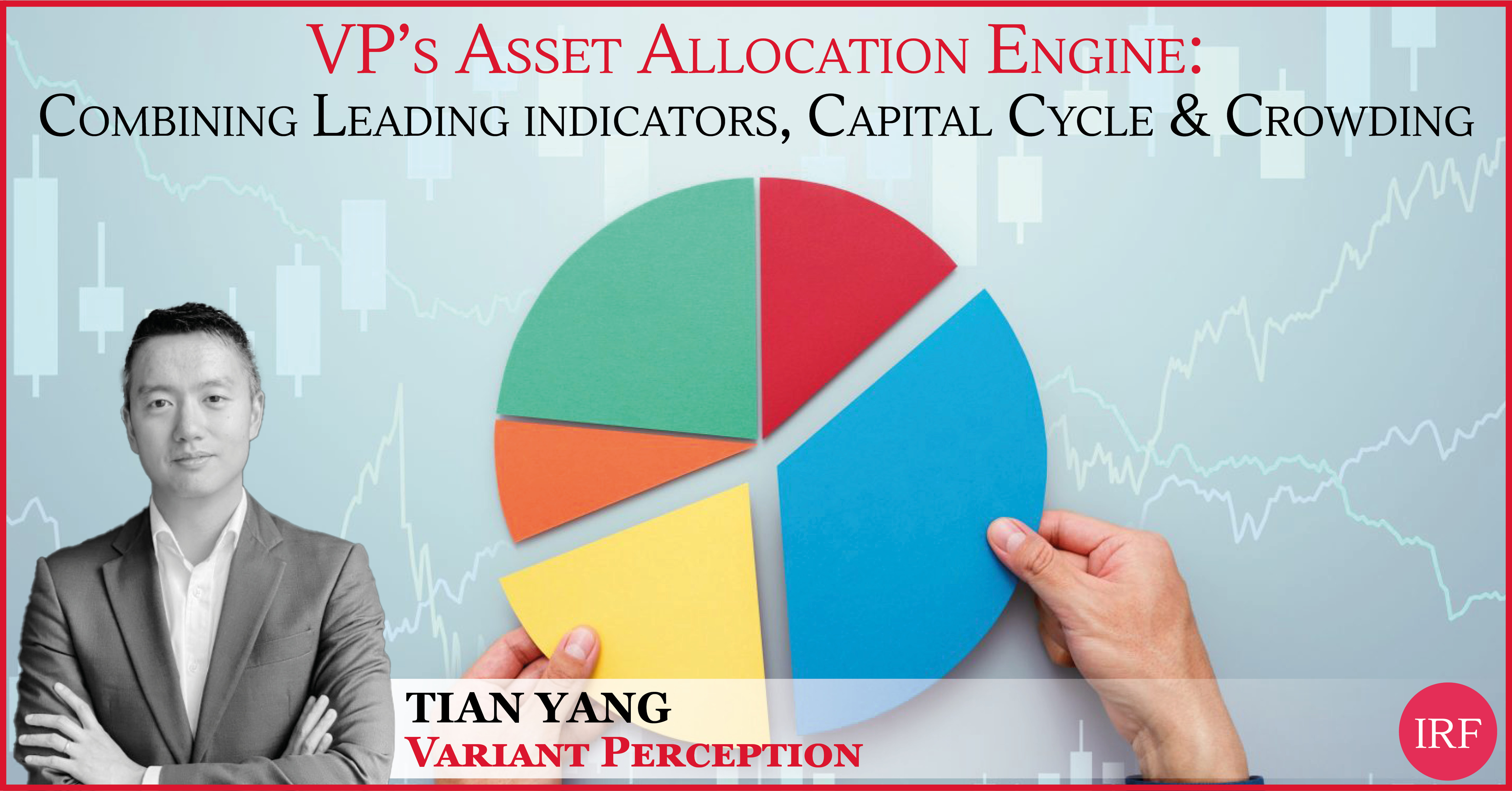VP's Asset Allocation Engine: Combining Leading indicators, Capital Cycle and Crowding
Variant Perception
Thu 26 Sep 2024 - 15:00 BST / 10AM EST
Summary
Tian Yang from Variant Perception shared insights into the firm's approach to investment and asset allocation, which centers on using widely available data sources to develop innovative, actionable models. Variant Perception, operating for 15 years, has built various models covering the business cycle, capital cycle, and short-term behavioral trends, aiming to provide smooth and actionable asset allocation recommendations. The firm's modular asset allocation engine begins by assessing the macroeconomic outlook to determine stock, bond, and cash allocations. Within equities, it refines sector over- or underweights using models like leading indicators, capital cycle analysis, and crowding dynamics. Unlike reactive models that depend on making large recession predictions, their framework emphasizes minimizing trading turnover and smoothly adjusting portfolios based on evolving data. Yang underscored the importance of future-proofing models, especially their leading indicators. These indicators adapt inputs over time, ensuring they remain effective as the economic structure evolves. For example, during the post-COVID period, the focus shifted towards service industries over manufacturing. The firm's models also anticipate policy shifts and assess liquidity through frameworks like the "Merlin multiplier," which compares high-quality money to lower-quality money, supporting market cap across equities and bonds. Yang highlighted how the firm's models performed in 2023, a year marked by expectations of a broad recession that didn’t materialize. While the model began 2023 in a defensive stance, it gradually adapted as the economy didn’t break down, demonstrating the flexibility of a rules-based approach. On equity and sector allocation, Variant Perception leverages capital cycle analysis and crowding scores. The capital cycle model identifies sectors with scarce or abundant capital, driving relative sector behavior. Crowding scores help manage risk, as crowded stocks may underperform in volatile markets. In 2023, the model balanced underexposure to NVIDIA with strong performance in sectors like communications and consumer staples. In conclusion, Variant Perception’s framework blends macroeconomic components—growth, inflation, policy, and liquidity—into a smooth macro regime score, driving decisions on risk exposure. Their innovative use of data and adaptive models aims to provide consistent, long-term performance without relying on bold market predictions or excessive portfolio turnover.
Topics
The VP Asset Allocation Engine simplifies and coalesces the most important VP models developed over the past 15+ years to generate actionable portfolio allocations
Two primary components of the engine: Leading economic indicators (LEIs) to quantify the current macro outlook and make high level asset allocation decisions between equities and bonds. VP’s capital cycle and crowding models to make more granular selection decisions across sectors within the equity allocation
Asset allocation process has been designed to be modular, so that the macro regime decision can be viewed separately from the sector ETF allocation decision.
